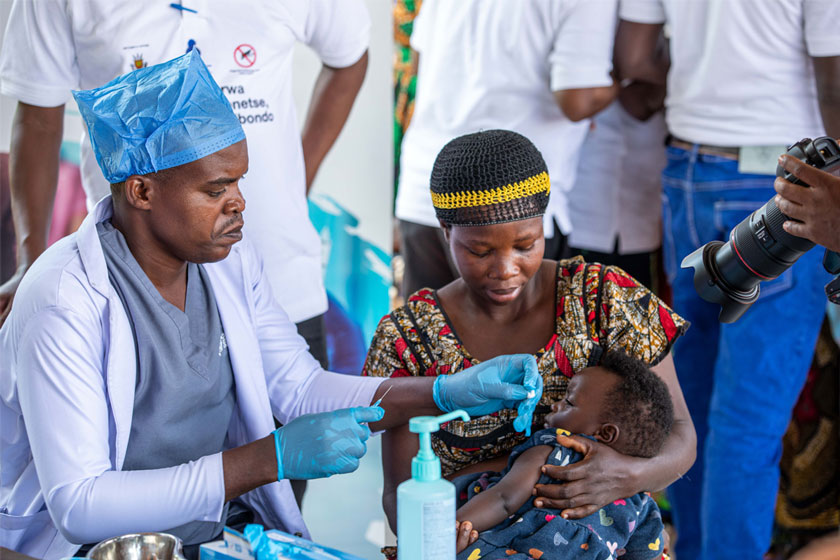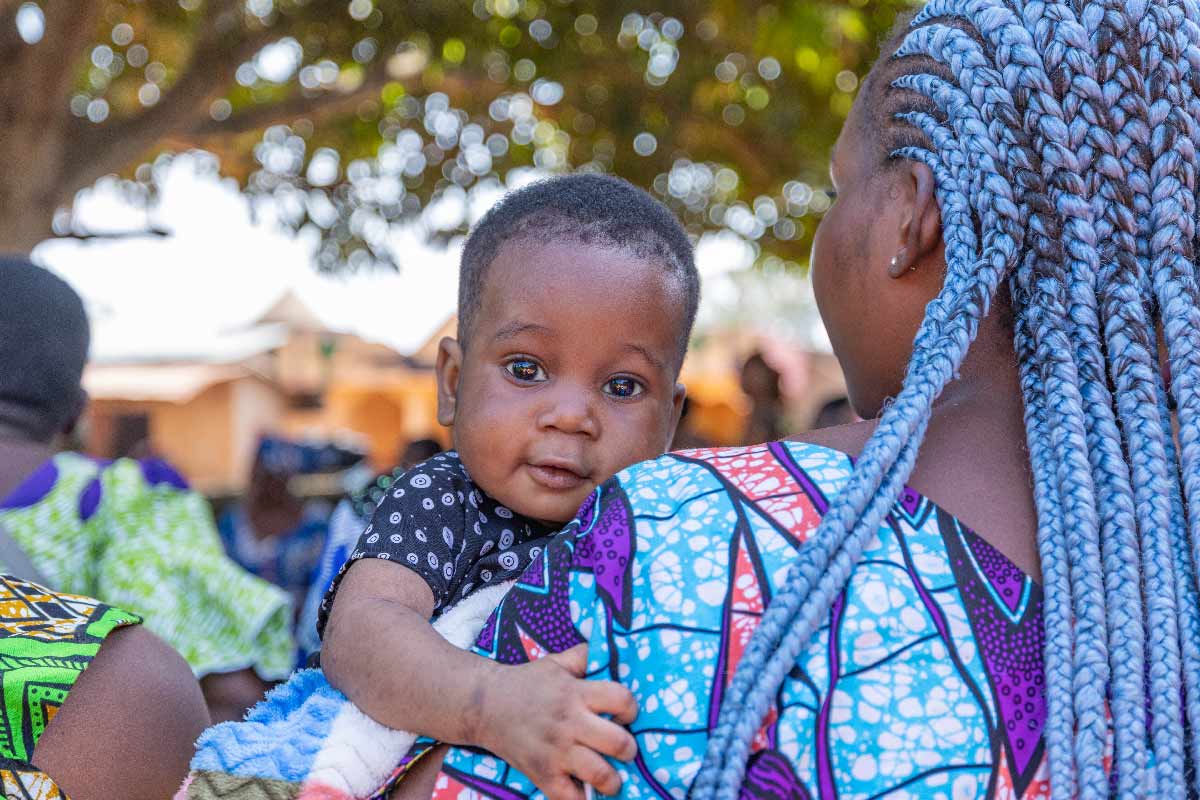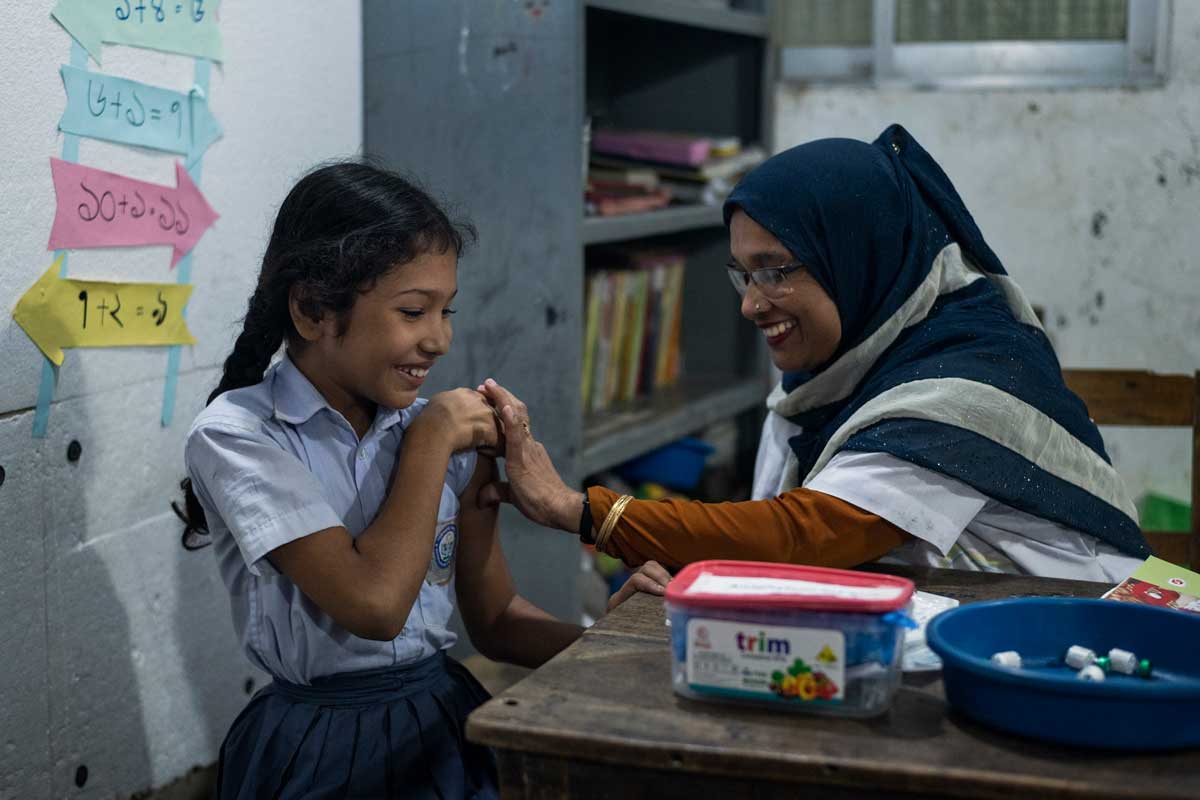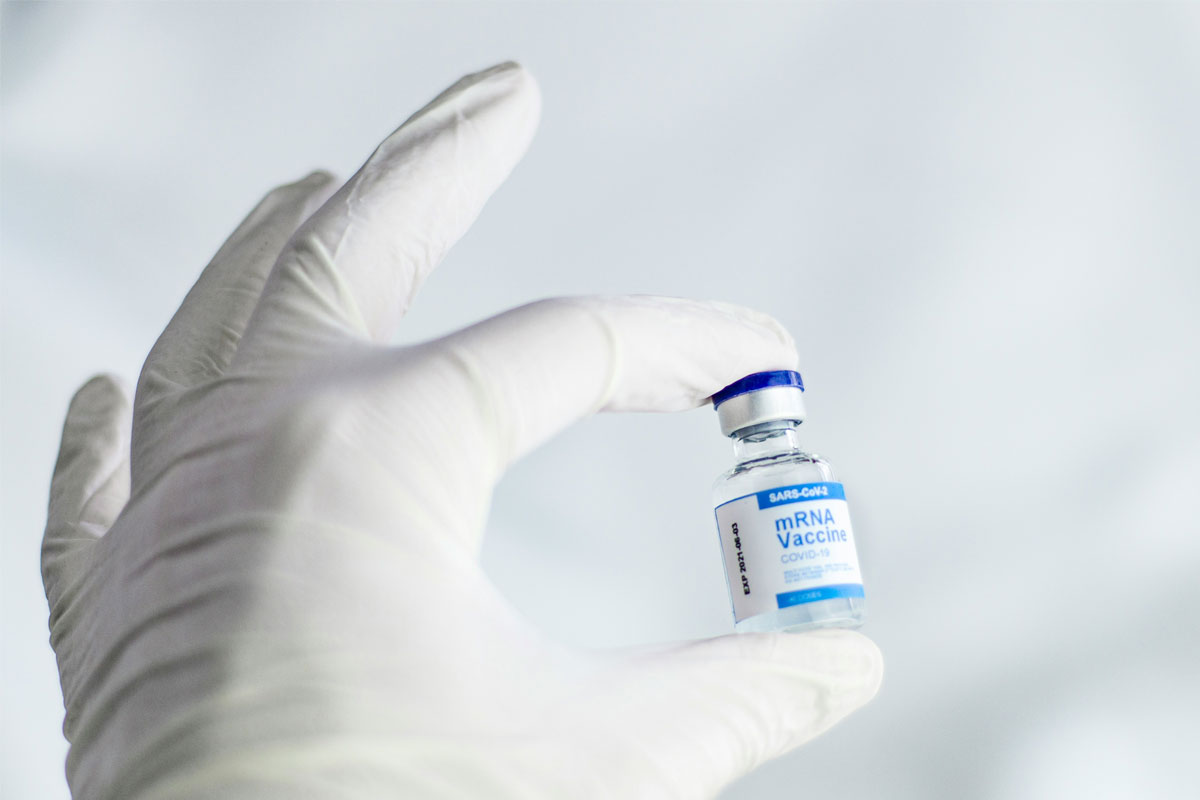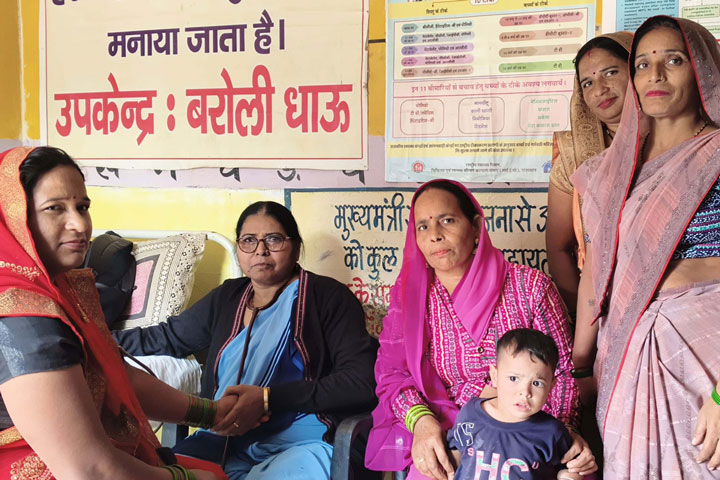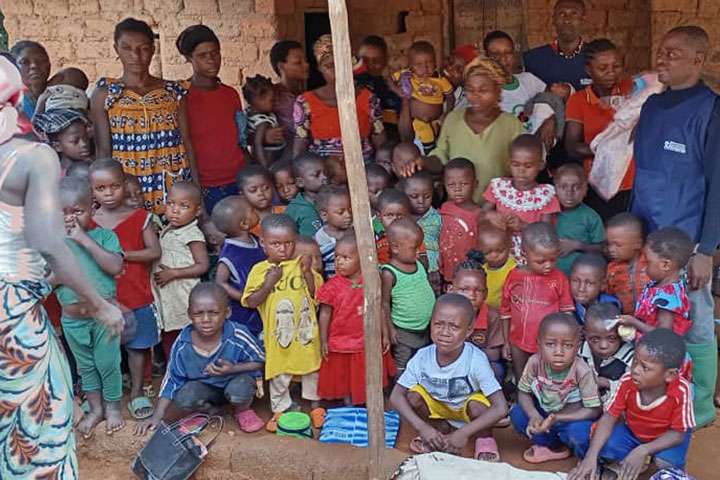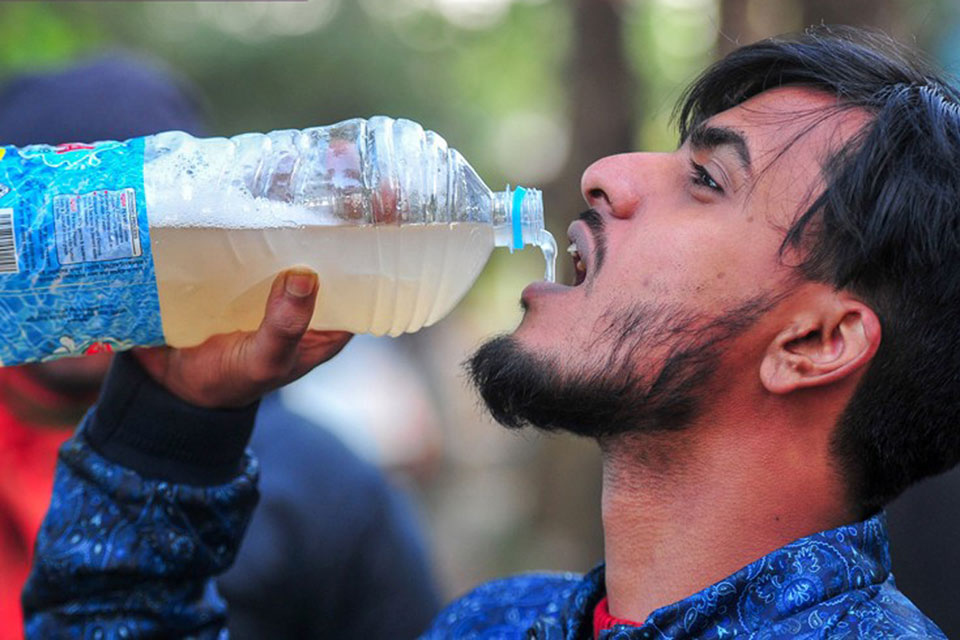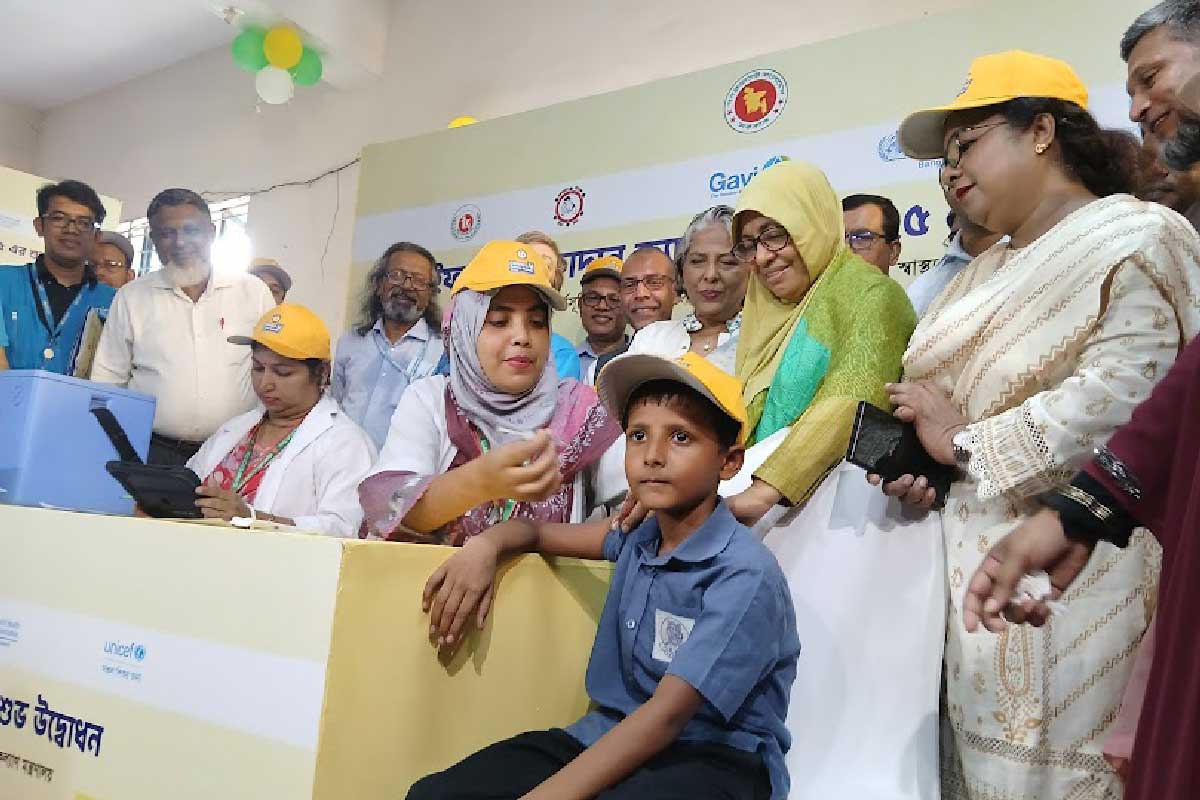What is the yellow fever vaccine stockpile?
Yellow fever can spread quickly and kill between 30% and 60% of its severely-afflicted victims. However, an emergency stockpile of vaccine doses has been helping halt epidemics for a quarter of a century.
- 29 April 2025
- 5 min read
- by Gavi Staff
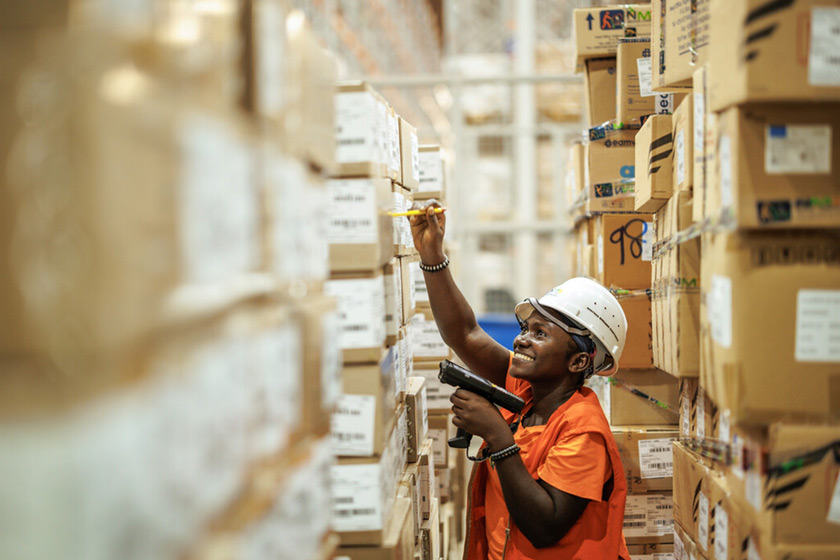
On 21 December 2023, an 18-year-old man in Western Equatoria State, South Sudan, was admitted to an isolation ward with fever, weakness, body pain, bloody vomit and yellowed eyes. Three days later, lab tests confirmed what authorities feared: yellow fever, an often deadly mosquito-borne viral disease.
South Sudan is one of just three1 Gavi-supported countries at high risk of yellow fever that had not yet carried out a nationwide preventive campaign, so a confirmed case of yellow fever signalled the risk of a rapidly-spreading public health crisis.
The Ministry of Health took two actions fast: declaring an outbreak, and submitting a request for 314,265 doses to the global emergency yellow fever vaccine stockpile – enough to cover everyone aged nine months to 60 in Yambio, Nzara and Tambura districts, where new suspected cases were already beginning to be reported.
Within ten days of receiving the jab, 80–100% of people will be effectively protected; within a month, 99% of immunised people will be immune for life.
In a matter of days, the international group of experts responsible for assessing applications to the stockpile informed the Ministry that the stockpile would be shipping more than double the requested number their way. Their own assessment of the epidemiological risk had determined that two further districts, Ezo and Ibba, needed protection too.
On 26 January, the vaccines were being wheeled out of the belly of a cargo plane on the tarmac at Juba airport. By 19 February, 658,160 people – 90% of the target population across the five districts – had been given a shot at safety. Their immunity, in turn, would rein in viral spread: by the outbreak’s end, 124 suspected cases had been counted, with the epidemiological curve bending into sharp, significant decline in early March.
What is the yellow fever stockpile?
The yellow fever vaccine stockpile is an emergency reserve of 6 million doses kept at the ready to fight epidemics, anywhere. Gavi funds the stockpile. The International Coordinating Group on Vaccine Provision – a consortium of experts drawn from an alliance of international health organisations convened under the aegis of the World Health Organization – manages it.
As a deployment mechanism, it’s designed to move at speed. Countries in need typically receive vaccines a couple of weeks after they make their request to the ICG. The vaccine, too, works quickly: within ten days of receiving the jab, 80–100% of people will be effectively protected; within a month, 99% of immunised people will be immune for life.
Have you read?
What happens when populations facing a yellow fever epidemic can’t get hold of vaccines? That bleak tale is written all over history. And though yellow fever vaccine technology is now almost a century old, as recently as 2000 – just before Gavi began its work– national-level forecasting failures (surveillance is not always up to par) and long vaccine manufacturing lead-times (it’s complicated to make) had precipitated a global shortage. Bad news.
Enter the stockpile. In 2001, a global emergency reserve of 2 million vaccine doses was laid by. In December 2015, however, an atypically large-scale outbreak sprang up in Angola and the Democratic Republic of the Congo, catching the world short on vaccine supply.
In May 2016, the stockpile’s size increased to 6 million doses. Meanwhile, Gavi’s preventive programme, in alignment with the EYE (eliminate yellow fever epidemics) strategy, scaled up preventive vaccination campaigns, which has helped to simultaneously to shore up vaccine supply and stabilise the predictability of need, reducing the likelihood of being caught short of vaccines in an emergency by more than one route.
Why do we need it?
In the middle of the 20th century, health programmes in various parts of the world took a run at conquering yellow fever altogether, principally by means of eradicating the host mosquito. Those efforts failed: yellow fever remains an endemic peril in 47 countries.
But those countries, supported by Gavi and technical partners, are not giving up the fight. Immunisation is a massive part of the strategy to eliminate yellow fever, with national vaccination programmes typically deploying a two-pronged attack: routine childhood immunisation and large preventive campaigns targeting almost everyone in at-risk populations.
But the particular epidemiology of the mosquito-vectored virus makes it hard to stifle completely – even when as many as 90% of the target population are reached (and in many at-risk places, coverage hovers at a much lower rate). This leaves large numbers of individuals vulnerable to infection, allowing room for epidemics to flare up. When they do, the consequences are serious: fatality rates for severe yellow fever fluctuate from 30% to 60%. Where immunity is low, outbreaks can double in size every five to seven days.
For health systems staring down those odds, the vaccine stockpile is an indispensable firefighting tool. Unfortunately, it’s only becoming more critical, as climate change, deforestation and patterns of urbanisation alter the scale and predictability of disease transmission.
More than 100 million people protected and counting
In the almost-quarter-century of its existence, the stockpile has proven its utility: in that time, about 107 million doses of yellow fever vaccine have been shipped out to countries hit by outbreaks. Between January 2016 and May 2024, 16 countries have needed to call on the stockpile’s resources; on average, it’s taken just a couple of weeks to get the vaccines they needed to them. As in South Sudan, outbreaks have been doused and quelled in time for many lives to be saved.
And between epidemic flare-ups, health systems continue to work on shoring up prevention – by vaccinating people before risk swells, by strengthening surveillance systems to spot disease early, and by making sure the means and know-how to treat yellow fever patients are available when and where they’re needed.
1 The other two countries in this list are Kenya, which is due a nationwide scale-up of routine yellow fever immunisation, and Ethiopia, which will roll out nationwide immunisation next year.
